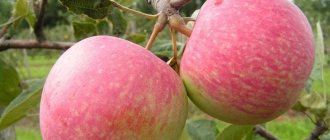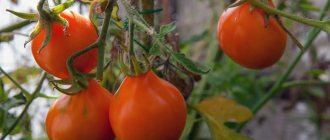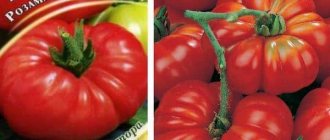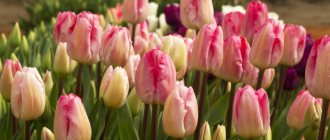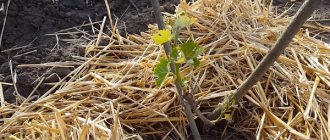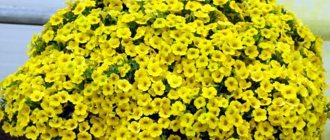It blooms beautifully and for a long time, so it is often used for landscaping front gardens, winter gardens and greenhouses, and is also used in phytodesign for vertical gardening.
Clerodendrum feels good both indoors and in open ground. If you provide the plant with proper care, it can bloom long and beautifully; there are also evergreen varieties that bloom all year round. We will talk about all the intricacies of caring for volkameria below.
Appearance of the plant, growing area
Clerodendrum is a vine-like tree or shrub plant. It is distinguished by lush and long-lasting flowering. The name of the flower has Greek roots, and it is translated as “tree of fate.” According to the beliefs of the natives of the island of Java, a branch of the plant is a magical talisman, an amulet that can change the life of its owner and provide him with the opportunities that he has long dreamed of.
The plant also gained popularity in Europe in the mid-nineteenth century. At this time it was grown in greenhouses and flower beds. Over time, breeders became interested in it. They crossed different species and got new, beautiful plants.
Clerodendrum - represents the Lamiaceae family and grows in Asia, Africa, Latin America, the Indian Ocean islands and Australia. There are evergreen and deciduous species. Lianas reach up to four meters in height, and shrubs - up to two.
Volkameria has a tetrahedral stem, olive or red-brown skin, and bright emerald opposite leaves. The leaf blades are different in shape and depend on the variety. In total, there are three forms of plant leaf blades:
- heart-shaped;
- oval;
- ovoid.
The leaves grow 20 cm long, and the edges can be smooth or with fine teeth. On the surface of the plates there is a clear venation, deepened along the central and lateral veins.
Inflorescences consist of small beautiful flowers at the tips of the shoots or in the leaf axils. They have a shield or paniculate structure. Long flower stalks give them elegance and make them look like lush bouquets.
The calyxes are bell-shaped and divided into five lobes, their diameter reaches 2.5 cm. The corolla is painted in contrasting tones, and long (up to 3 cm) and thin stamens grow from its center.
Volkameria usually blooms from April to September and smells pleasant. It is interesting that not only flowers smell, but also leaves, and each has a unique aroma. Large bracts remain on the bush until the dormant period, which gives the feeling that the plant is constantly blooming. After flowering, most species grow oblong orange fruits, up to 1 cm long. They contain only one seed.
Characteristics of clerodendrum
Under natural conditions, it can be found in the tropics of Asia, Australia, as well as on the coastal areas of the Indian Ocean islands. The options can be very different: there are both shrubs and vines more than 4 m long.
Pagoda
According to the classification of clerodendrum, plant species and varieties belong to the Lamiaceae family. Deciduous forms of the plant are common, but shrubby flower representatives can be found.
The shape of the stems varies. In rooms and greenhouses, vines are preferred for vertical gardening. The shrubs are short and, with proper planting and pruning, can be grown into a nice flowering tree.
The leaves are smooth and have a typical tetrahedral shape. Arranged in pairs, opposite. The shape varies.
Clerodendrum can bloom for a long time, but only with proper care. Sometimes this period lasts from April until October until the onset of cold weather. The inflorescences have a characteristic appearance.
For your information! It was no coincidence that he was nicknamed the Bloody Godfather. In ancient times, it was used to decorate temples, because the snow-white petals, against which the bright scarlet long stamens contrast, really resemble a poisonous cross.
The inflorescence itself contains several bell-shaped calyxes. The color of the petals can be not only white, but it always contrasts with the stamens.
The plant exudes a delicate fragrant aroma. Each variety and variety has its own, special one.
Varieties and varieties with photos
Not every one of the many varieties of clerodendrum can be grown at home. We present a selection of types of clerodendrum used by gardeners to grow at home or in the garden:
Ugandan is a liana-like shrub with broadly lanceolate leaves. Its inflorescences consist of two flowers. The shades depend on the location: the upper and side petals are blue, and the lower petals are violet. Flowers that have faded are quickly replaced by new ones, which is why this variety seems to bloom continuously. In open ground, the plant grows in a few months to a height of three meters. At home, the bushes are more compact, but you need to constantly trim and shape them. This species can tolerate interruptions in watering.
Wallicha (Prospero) is an evergreen shrub with smooth leaves. It is covered with bright white inflorescences from which long stamens hang. Another name for it is “Bride’s Veil”. The bush has red-green branches and dark green oblong leaves up to 8 cm long. White flowers of this variety bloom in the internodes. The species is very demanding on the length of daylight hours and needs air of high humidity.
Inerme is a variegated species with leaves of a rich emerald hue. On the oval and oblong leaf plate, veins of a light green hue are clearly visible. The flowers are dark purple in color, with long, drooping stamens. Easy to care for.
Brilliant is an evergreen bush with long climbing stems. The leaves have a round shape and a heart-shaped base. They are arranged oppositely and grow in whorls of three pieces up to 8 cm in length. Peduncles grow from leaf axils. These are dense brushes with scarlet flowers. Favorable conditions will ensure year-round flowering.
Thomson's is a deciduous woody vine that requires regular pruning. The liana blooms spectacularly: snow-white bracts bloom red flowers with elongated stamens. In Southeast Asia it is called "innocent love".
According to legend, unmarried girls should not grow the vine, due to the risk of unrequited love. Volcameria of this species has dense dark green leaves, up to 12 cm long. Bright white, bell-like bracts bloom small red flowers with elongated cream-colored stamens. Flowering occurs from late March to June, and under favorable conditions, even in autumn. The plant tolerates drought and temperatures below 15 degrees.
Bunge is a climbing vine. It has purple leaves, large inflorescences in the shape of dark pink balls. They grow at the ends of the shoots. This species is in color throughout the summer, and the flowers from a distance look like fireworks.
The most beautiful is an evergreen, three-meter shrub with heart-shaped leaves. It has heart-shaped leaves with a soft edge, long pale red petioles and a tetrahedral trunk. The paniculate inflorescences consist of small purple calyxes with dark red corollas. This variety blooms brightly and profusely throughout the summer and early fall, including September.
Fragrant is an evergreen two-meter shrub. Leaves and stems have soft edges that are pleasant to hold. Double pinkish flowers exude a pleasant aroma reminiscent of violets and citrus fruits. This variety blooms throughout the year if cared for properly.
Schmidt (“Chains of Glory”) is a voluminous bush with white flowers and racemes about 50 cm long. The flowers hang in a cascade. This variety blooms all year and sometimes rests. Interestingly, in winter the shrub blooms twice.
Speciosum (another name for the variety is “The Most Beautiful”) is a hybrid with a short reddish stem, large leaves resembling a heart with a fleecy edge. The inflorescences have a racemose shape and scarlet flowers, with elongated stamens, and calyxes of a lilac-pink hue . the inflorescences stay on the bush for a long time. The hybrid propagates by cuttings.
Calamitosum is a small shrub that blooms very beautifully with white flowers reminiscent of butterflies with a sweet aroma. It begins to bloom at the end of winter.
“Musical notes” is an unpretentious variety. The flower is very compact and does not grow higher than 70 cm, so it is good to grow even in a one-room apartment. White flowers with long crimson stamens grow on a peduncle and hang from the branches in clusters. Flowering lasts all year round with short breaks. The plant has velvety, pleasant, dark green leaves. This variety reproduces well by cuttings, loves light and grows quickly.
“Champagne splash” is a rare species with strong immunity; its shoots are long and slightly branched, and its leaves are oblong. When the variety blooms, large inflorescences with a loose structure appear at the top of the bush, inside of which there are flowers of a pale green hue. They grow on long flower tubes, from which the species gets its name.
Features of the variety: description and photo
Clerodendrum inerme (colloquially known as "unarmed") is an evergreen volkameria with long vines covered with rich emerald foliage. The shape of the leaf blades is oval.
The shrub blooms with white delicate flowers that look like moths. They are characterized by the presence of long purple stamens, thanks to which the flowers look like bright and graceful butterflies.
This plant is not often found at home , but it can be successfully used in regions with a hot climate in landscape design; it will become an unusual decoration for a personal plot or front garden, or a beautiful hedge.
Next you can see the photo of clerodendrum inerme:
The inerme variegated variety is considered no less interesting . Its difference from clerodendrum inerme is that its foliage has light green spots that create an original marble pattern.
Below you can see a photo of a variegated plant variety:
Disembarkation
Planting takes place according to certain rules. Before planting or replanting a flower, prepare nutritious soil. You need to mix several components in a 1:1 ratio. The mixture consists of leaf humus, clay soil, river sand and peat. If the mixture cannot be prepared, you can make it simpler and purchase a ready-made mixture in the store.
Please note: if you decide to prepare the soil yourself, do not add too much peat - volkameria requires slightly acidic soil. Ready-made primer from the store has gone through all stages of processing before hitting the shelves and can be used. The self-prepared mixture is disinfected before use. To do this:
- Clean out any debris from the mixture.
- The next step is to place a thin layer of the mixture on a baking sheet.
- Preheat the oven to 200-220 degrees.
- When the oven is warm enough, remove the soil for 20 minutes.
The second method is suitable if it is not possible to use the oven:
- Pour a small amount of water into the pan.
- Pull a thin, permeable material over it.
- Place a thin layer of soil on top of it and turn on the heat.
- After the water boils, leave the soil for 10-5 minutes.
- Remove and add a new portion.
Adult plants are transplanted in the spring, as soon as they have moved away from the dormant state and are preparing to grow green mass. Transplantation is performed when the plant has grown greatly and can overturn the pot. To transplant, follow a few simple steps:
- Choose a large, stable pot, about 4 cm wider than the old one.
- Place drainage made of expanded clay or river pebbles at the bottom. The layer thickness should reach 3-4 cm.
- Add a layer of nutrient soil.
- Replant the plant by transferring it into a new pot, keeping the earthen lump as much as possible.
- Add the missing soil around the edges and tamp down a little.
- Place the plant in a moderately shaded place and moisten after 2-3 days.
- Put the flower back in its original place and care for it as usual.
If volkameria has just been purchased, it can be replanted at any time of the year. Important: take your time, she needs about 3 weeks to adapt before the transplant. Let's look at how to replant a plant in this case:
- Shake the pot, separate the soil from the walls using a thin stick.
- Replant the flower along with a lump of soil, placing it in the center of the new pot.
- Add soil.
Please note: for the first five years of Volkameria's life, it must be replanted annually. After six years - once every three years.
Description of the plant and where it comes from
Clerodendrum, or clerodendron, belonging to the large Yasnotkov family, is better known among the people as the “tree of fate” or “innocent love” (volkameria). The flower belongs to the “lucky” category. It is believed that his presence in the house has a beneficial effect on the fate of the household.
Clerodendrums are deciduous shrubs or small trees that grow mainly in the tropics or subtropics. They can be found on almost all continents - Africa, Asia, America, Australia. Most species grow in warm climates and only a few in temperate climates.
On a note! In some sources, clerodendrum is classified as a member of the Verbenov family. This is outdated information; now the plant is classified as Yasnotkovyh. Its closest relatives are sage, rosemary, mint and basil.
Brief description and features of clerodendrum:
- The stems are long, flexible, woody at the bottom.
- The leaves are dark green, slightly rough, up to 30 cm long. Their shape is heart-shaped or oval. The presence of teeth on the edges of leaves depends on the species.
- Flowers with elongated stamens, slightly double, usually white with a pinkish, red or purple frame. Collected in small inflorescences.
The plant is valued for the beauty of its blooms. Clerodendrum flowers are extremely beautiful. In shape and color they resemble moths sitting down to rest on a green bush. Clerodendrum has a scent not only for its flowers, but also for its leaves, and each species has a different scent.
There are many signs and superstitions associated with clerodendrum. It is believed that the more magnificent the flower blooms, the greater luck awaits the owners of the house. In Feng Shui, the “tree of fate” is a mandatory attribute of a happy home. In ancient Rome, clerodendrum was considered a cult plant and was associated with Venus, the goddess of love.
What should be the lighting in the room?
Volkameria is unpretentious and tolerates light and partial shade well.
Flower growers recommend placing it in a shaded place where direct sunlight does not reach. Please note: it is better to place the flower on the west or east side. On the north side it will not have enough light, which will negatively affect flowering.
In this case, use phytolamps to increase the brightness and duration of daylight hours.
How to organize competent care
These flowers can be considered unique. For all their beauty and fragrance, they are very hardy and unpretentious. It is enough to master the simple basics of care. In order for clerodendrum to please the owner with amazing flowering, it is necessary to create conditions as close as possible to natural ones.
Lighting and temperature
Clerodendrums survive in almost any conditions. In order for them to bloom, a combination of favorable factors is necessary. The plant loves light, but should be protected from direct sunlight. It will be enough to separate it with a small curtain. Feels good on southern, eastern and western windowsills.
You can decorate the middle of the room, bedroom or living room with a flowerpot. In this case, make sure that the flower receives enough light.
In the warm season, the optimal temperature is 20-25 C. The winter period is a time of peace and rest. When it is cold outside, a temperature of 15 C is ideal for the plant.
Humidity and watering
Like many tropical inhabitants, houseplants prefer high air humidity, love spraying, and absorb moisture through the foliage. This procedure should become a habit for the owner. The condition and well-being of the plant will depend on the regularity. This point is even more important than direct watering.
Watering should be done little by little. Excessive amounts of moisture in the soil can cause rotting of the root system. In summer you need to add water twice a week, in winter - several times a month.
For irrigation, it is better to use lukewarm, settled water. The most suitable for the plant is melted or rain. But it is not always possible to obtain such a liquid.
Soil and fertilizing
In nature, clerodendrum grows in fertile soil containing a lot of useful elements. To create an ideal soil, mix 30% leaf soil and peat, 20% clay soil and sand. The tray of the pot is filled with wet gravel. This way the soil will not dry out.
During the flowering period it is allowed to fertilize. Purchase a complex mixture for flowering house plants at a specialized store. In the cold season, fertilizing is not carried out.
Indoor climate
Volkameria is quite unpretentious; it does not require any special care conditions. It grows at room temperature up to 25 degrees. In winter, when the flower is resting, it needs to be moved to a cooler place, up to 15-18 degrees. In summer, flower pots can be taken out onto the balcony or veranda. Volkameria loves water, so it needs to be watered constantly. Please note: the water for irrigation must be soft, so it is pre-settled in a bottle for several days. Hard water forms a whitish coating.
Tip: in winter, place the plant away from the radiator and humidify the air. Use electric humidifiers or place trays of wet pebbles near the flower.
Brief description of cultivation
- Bloom . It starts in June and ends in the first weeks of autumn. Flowering of fragrant clerodendrum is observed almost all year round.
- Illumination . Bright but diffused light is needed (windows of western or eastern orientation, while the bush on the southern windowsill must be shaded).
- Temperature regime . During the growing season and flowering, the temperature should be from 18 to 25 degrees, and during the dormant period - from 13 to 15 degrees.
- Watering . It should be plentiful. The soil mixture is moistened after its surface has dried.
- Air humidity . She must be tall. To do this, in spring and summer, moisten the bush every evening with a spray bottle, and in winter, remove it away from heating appliances.
- Fertilizer . Feeding is carried out from the second half of spring until the last days of summer regularly once every 15 days. To do this, use a mineral complex fertilizer for flowering plants.
- Rest period . When flowering ends in the autumn-winter period.
- Trimming . At the very beginning of active growth.
- Transplant . The plant is replanted at the beginning of the growing season. While the bush is young, it should be replanted regularly once a year, and an adult plant - once every 2 or 3 years.
- Reproduction . By cuttings and seed method.
- Harmful insects . Whiteflies, aphids and spider mites.
- Diseases . Rot and chlorosis.
How to water a flower correctly
Without proper watering, the plant will begin to hurt or sag. Drought-resistant species of Volcameria are sometimes found, but most varieties require constant, abundant watering. Moistening is carried out after the top layer of soil dries. In winter, watering is reduced based on air humidity. The colder the room, the less the flower needs to be watered.
Please note: at rest, watering is replaced by spraying the root zone with soft water at room temperature.
Secrets of care
At home, the main difficulty in caring for clerodendrum is creating comfortable conditions that are close to natural.
Lighting. The plant loves bright, diffused light for 12-14 hours daily. It can be placed in the depths of the southern room or on the eastern (western) window sill. During the midday hours, shading will be needed. On the northern window there will not be enough light for the clerodendrum and you will have to use phytolamps. You can't wait for flowers without it.
Temperature. Clerodendrum is a plant with a pronounced dormant period. From April to November, the optimal air temperature for it is +20…+25°C. On too hot days, you need to ventilate the room more often or expose the flower to the open air, but protect it from drafts. In winter, you need to keep the plant cool (about +15°C).
Humidity. High air humidity is vital for the plant. It should be sprayed several times a day, bathed regularly and the leaves wiped with a damp cloth. For water procedures, use well-purified, settled water so that unsightly stains do not appear on the leaves. In winter, clerodendrum should be placed as far as possible from heating appliances.
Watering. Indoor flowers need regular but moderate watering. A small portion of soft water at room temperature is poured into the soil at a time. In spring and summer, only the top layer of soil should dry out. In winter, the soil is allowed to dry by half, but no more.
Fertilizer. Clerodendrums are fertilized from March until flowering ends three times a month. A solution of a mineral complex fertilizer intended for flowering plants is poured into the soil.
Transfer. The root system of clerodendrum is quite fragile, so transplantation is carried out using the transshipment method. The tap rhizome requires a deep pot. At the bottom there is a 4-5 cm drainage layer made of fragments of red brick, pebbles or expanded clay. The soil is made up of:
- leaf soil;
- clay soil;
- river sand;
- peat
Trimming. Even indoors, the plant can reach impressive sizes. Fortunately, it tolerates pruning well and can take any shape (bush, tree or flexible vine). In spring, cut to a third of the length of the stems and pinch off the tips of the sprouts. Another benefit of pruning is that flowers bloom on young shoots. The resulting material is convenient to use for cuttings.
Feeding volkameria
Feeding takes place from April to September with any complex of mineral fertilizers for flowering plants. It is better to opt for products with a low nitrogen content. Its excess provokes the growth of greenery and the plant does not have enough strength to flower.
Important! The best option is phosphorus-potassium complex, applied once a month. Mineral supplements are supplemented with liquid organic additives. They are diluted according to instructions and added every two weeks. In the fall, feeding is completed to prepare the flower for sleep.
Soil and fertilizing
Slightly acidic soil is most suitable for the plant. It will be ideal when it consists of equal parts of river sand, humus, leaf and turf soil.
For the subcortex of clerodendrum, a liquid fertilizer specially sold for indoor plants would be ideal. In winter - during the dormant period of the flower - no feeding is needed, but during the active period the plant needs frequent and regular feeding, at least once every two weeks.
How to prune
Some hobbyists are interested in whether the plant needs pruning.
Without pruning, volkameria grows quickly and reaches gigantic sizes without care. Pruning is carried out in the spring, shortening up to a third of the length of the shoots. The ends of the sprouts are pinched during the procedure. Volkameria can become a flexible vine, bush, or tree. Pruning rejuvenates the plant, increases decorativeness and makes young shoots bloom.
Remove shoots, dry, diseased, damaged shoots throughout the growing season. If the trimmed parts have two growth parts, they can be used in cuttings.
If clerodendrum grows in open ground, the bushes are pruned and additional supports are made for the vines. To form a trunk, the strongest stem is selected and the lateral shoots are cut off. When the height reaches 50 cm, pruning is carried out, and then young shoots are pinched.
This is how a beautiful tree is formed, from which the lower shoots starting from the root collar are regularly trimmed.
Types of clerodendrum
There are about 400 species of clerodendrum in nature, but only a few types of flowers are popular among gardeners. Most of all, flower lovers loved two varieties of clerodendrum - Brilliant and Thompson. Below are the most popular types of clerodendrum with photos, care features and brief descriptions.
Thompson
This variety has the appearance of a vine. It has smooth stems and leaves with dark or light spots. The flowers are white, with scarlet corollas, collected in brushes. They bloom from spring to June.
In nature, vine shoots grow up to 4 m in length. Caring for Thompson clerodendrum at home is simple. This indoor flower grows rapidly and rarely creates problems for its owners.
Philippine
Powerful and unpretentious shrub with straight stems. In an apartment it can grow up to 2 m in height. Considered one of the most fragrant clerodendrums. The flowers are white, pinkish, and smell of vanilla and jasmine. They are collected in large inflorescences and smell especially strongly in the evening.
Ugandan
Clerodendrum Ugandan is a fast-growing vine that can twine around the support provided to it in a few days. The length of the shoots reaches 2–3 m. The flowers are blue-blue, similar to fluttering moths.
On a note!
The Ugandan species, unlike most clerodendrums, does not have a particularly pleasant specific smell, which not everyone likes.
Wallich
Decorative compact bush with hanging branches. The lanceolate leaves have serrated edges. The flowers are white, collected in lush racemes. The height of Wallich clerodendrum in nature is 1.5 m, indoors - 0.5 m.
Inerme
This is a vine that is rarely grown indoors. In the southern regions it is used as a hedge. The flowers of this type of clerodendrum are white and the stamens are bright purple. There is a marble pattern on the light green leaves.
How to care for clerodendrum alone
Preparation for wintering begins after the period of autumn flowering and the appearance of seeds. Deciduous varieties shed leaves and faded inflorescences.
Evergreen varieties shed only dried flowers. When clerodendrum begins to prepare, you need to change its usual conditions:
- reduce watering to a minimum. Replace them with moisturizing the root zone;
- monitor humidity - temperature readings should not exceed 12-15 degrees;
- Place the flower pot in the shade.
Make sure that Volkameria does not wake up too early.
This is due to warming and increasing daylight hours. Awakening takes place at the end of February by placing the plant in a permanent place and increasing the intensity of watering.
Clerodendrum wakes up in the first ten days of March, grows greenery and forms ovaries.
What does it look like
Clerodendrum has rather large, heart-shaped leaves. Leaf color is dark green. The inflorescences resemble half-closed bells.
The main decorative decoration is flowers; with them the plant looks very exotic and cute. The pleasant appearance of the blooming clerodendrum is complemented by a wonderful aroma, which, however, makes this flower more popular.
Clerodendrum is divided into a wide variety of species. Among them there are also climbing trees and shrubs.
How to propagate Volcameria
Volkameria can be propagated for beauty and even for selection. Reproduction methods also differ depending on the goals.
Seeds
If for some reason you cannot cut a cutting, or are interested in selection, use the proposed method:
- before the beginning of spring, pour a mixture of sand, peat and turf into a shallow container;
- moisten it and plant the seeds;
- cover the planting with glass or polyethylene, place the boxes in a warm, bright place;
- remove film or glass daily, ventilating the substrate for about 15 minutes;
- Moisten the soil by spraying when it dries out;
- after one and a half to two months, when the first shoots appear, dismantle the greenhouse and grow them open;
- When the first four leaves appear, plant the shoots in separate containers with a diameter of up to 6-10 cm. Three plants can be placed in each pot.
Young shoots quickly adapt and grow actively.
Cuttings
The cutting method is effective, low-cost, and makes it possible to quickly obtain a new plant. The planting material can be a cutting with two or three internodes. Let's look at how to carry out cuttings:
- Pour filtered boiled water into a container and place the cutting there;
- add crushed activated carbon (3 tablets per glass of water);
- place the container in a bright, warm place without drafts (note: there should be no cold air coming from the frame and glass);
- When the cutting gives roots and they grow to 3-5 cm, transplant the shoot into a separate pot. Its diameter should not exceed 7 cm;
- Cover the sprout with a glass jar and root until the first leaf appears;
- Every day, remove the jar for 10-15 minutes to ventilate the shoot, moisten the substrate if necessary;
- When the first leaves appear, remove the jar, care for and grow clerodendrum in a pot for a year;
- After a year, transplant the plant into a pot with a diameter of up to 12 cm. Pluck out the shoots several times a year to stimulate growth and branching.
Features of reproduction
Clerodendrum inerme reproduces by seeds; they are sown in late February - early March. Next, they are placed in a greenhouse until the first shoots, where they are kept in good light, moderate humidity and ventilation.
The development of clerodendrum inerme seeds is a slow process. You will have to wait at least a month and a half for the first shoots, maximum two.
When they appear, it is good to carry out regular hardening, opening the shoots slightly for 20-30 minutes.
When the sprouts have four leaves, they need to be moved into containers with a diameter of 6 cm, one seedling at a time ; or take containers with a diameter of 11 cm and pick three seedlings at a time. Once they are established and begin to grow, you can begin to acclimate them to the conditions of adult plants.
If you already have Volkameria, then the generative (seed) method of propagation will not be needed. And you will need a vegetative method of propagation (cuttings). This method is the simplest and most effective, so flower growers often use it.
Cuttings take root easily in water, especially in spring and summer. Cuttings that have taken root should be planted in a container with a diameter of 7 cm and grown under a glass cover, not forgetting to maintain humidity. You must proceed as follows:
- As soon as the root system develops and the first leaves and shoots appear on the cutting, the cutting along with the root ball should be moved into a large pot with a diameter of 9 cm. In this container, the flower will grow until spring, but without a cap.
- A year after rooting, the bush should be transferred to a pot with a diameter of 11 cm, which should be filled with soil for an adult plant.
- During all this time, it is necessary to pinch the shoots at least twice to stimulate the growth of lateral branches.
A few words about diseases and pests
Volkameria is a hardy plant that rarely gets sick; most often it gets sick not from infections, but due to improper care. Let's look at the most common problems and the reasons for their occurrence:
- Yellow and wilted leaves indicate insufficient watering. Trim yellowed leaves and water the plant more often.
- Dried and fallen buds and leaves appear when the air is very dry. To solve the problem, use moisture and spray Volkameria.
- Brown spots on the leaves are the result of sunburn; place the pot in the shade, or create diffuse lighting using tulle or gauze stretched over the windows.
- The presence of a large distance between adjacent internodes and a bare trunk are signs of a lack of light. Place the plant on the sunny side, or under a phytolamp.
- If Volkameria does not bloom, the dormant period is not organized correctly. Another reason is unbalanced feeding. Transplant it into fresh substrate and put it to sleep for the winter. In the second half of October, move the flower to a cool place and reduce watering. Some of the species shed their leaves during this period of time; this is a natural process. Rest and spring pruning will help the flower gain strength, grow foliage and become more beautiful.
- Chlorosis, or reduced color intensity, yellowing of the foliage and changes in the shape of the plates are a sign of a lack of microelements in the soil. To cure volkameria, add a complex of mineral fertilizers to the soil.
- The appearance of powdery mildew indicates that the water used to water the plant is very cold. Moisten the plant with water warmed to room temperature.
Among the pests we highlight:
- whitefly;
- scale insect;
- spider mite.
The appearance of these uninvited guests indicates dry air in the room where the flower grows. Modern drugs will help get rid of pests.
To destroy whiteflies and spider mites, use Confidor or Fitoverm.
Processing takes place in several passes with a week break.
Not only drugs, but also folk remedies will help in the fight against pests. Water the flower with garlic or onion infusion - the specific smell will get rid of problems - pests cannot tolerate it and will go away.
Diseases, pests and their control
During the growth process, clerodendrum can be affected by various diseases and insects, which must be identified in a timely manner in order to save the plant from death:
| Manifestations | Causes | Solution |
| Yellowness. | It is necessary to water and spray the plant using only soft water, which is pre-settled. | |
| Lethargy of the plant. | Root rot. | The clerodendrum is removed from the pot, the root system is washed, and damaged areas are removed. The roots are sprinkled with powdered charcoal. Then it is planted in new soil and the watering regime is adjusted. |
| Deformation of shoots, plaque on foliage. | Spider mite or whitefly. | The plant is washed with water and then sprayed with an insecticide (2 ml of Fitoverm diluted in a liter of water). After two weeks, the treatment is repeated. |
| Curling leaves inward. | Aphid. | The most damaged foliage is removed, the remaining is washed and sprayed with any insecticide. After two weeks, the plant is re-treated. |
Landing instructions: rules and tips
Plant in early spring, when Clerodendrum has just begun to grow and the first leaves have appeared. If you need to replant at another time of the year, do it carefully using the transshipment procedure.
The substrate needs to be light and fertile. Most often this is forest soil, river sand. If the plant's shoots are too long, tie them so as not to break them when you plant them.
When replanting, you must choose a pot with a large hole. Be sure to add expanded clay to the bottom of the pot; the thickness of the mound should not exceed five centimeters.
Soil requirements
For clerodendrum it is better to choose slightly acidic soil. The soil mixture looks like this:
- fertile turf;
- dry peat;
- coarse sand;
- leaf soil.
The first one needs to be taken twice as much as the others.
Lighting and location
Clerodendrum is best placed on the windowsill of a window that faces west or east. You should not choose the north side, as the plant will not bloom, but if planted on the south side, there will be an abundance of sunlight.
The flower responds well to light, but in the hot season, you need to be extremely careful and avoid excessive exposure to sunlight.
The flower can get burned from strong direct rays of the sun. In winter, it is worth removing the flower from the windowsill and providing the required amount of light with a fluorescent lamp.
Possible difficulties
Clerodendrum has excellent immunity and very rarely suffers from fungal diseases with prolonged improper care. He is not afraid of other illnesses.
Of the parasites, the plant is attacked by spider mites and whiteflies. Most often, insects breed when the air is too dry. Modern insecticides will help you get rid of them quickly. Treatment is carried out in series of 2-3 times with an interval of 4-7 days.
Sometimes the appearance of clerodendrum becomes unsatisfactory due to errors in care:
- the leaves have turned yellow and withered - insufficient watering;
- brownish spots on the foliage – sunburn;
- leaves dry from the edges and fall off along with the buds - the air is too dry;
- the internodes are too long, and the shoots are bare - lack of lighting.
Sometimes flower growers cannot wait for a long time for fragrant buds on clerodendrum. The lack of flowering is usually associated with an improperly organized dormant period (warm wintering). A lack of fertilizer or an excess of nitrogenous fertilizers can also be a problem. You just need to transplant the flower into the right soil, and in winter keep it for several months at a temperature of +12...+15°C and already at the beginning of spring the first buds will be noticeable.

